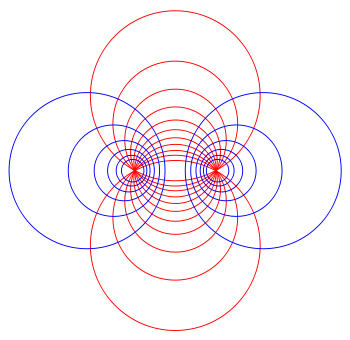Pencil (mathematics)
In projective geometry, a pencil is a family of geometric objects with a common property, for example the set of lines that pass through a given point in a projective plane.

For instance, in the development of G. B. Halsted, "Straights with the same cross are copunctal." Also "The aggregate of all coplanar, copunctal straights is called a flat-pencil" and "A piece of a flat-pencil bounded by two of the straights as sides, is called an angle."[1]
"The aggregate of all planes on a straight is called an axial-pencil." For example, the meridians of the globe are defined by the pencil of planes on the axis of Earth's rotation.
In affine geometry with the reflexive variant of parallelism, a set of parallel lines forms an equivalence class called a pencil of parallel lines.[2]
More generally, a pencil is the special case of a linear system of divisors in which the parameter space is a projective line. Typical pencils of curves in the projective plane, for example, are written as
where C = 0, C′ = 0 are plane curves.
A pencil of planes, the family of planes through a given straight line, is sometimes referred to as a fan or a sheaf.
See also
- Pencil beam
- Pencil of circles
- Lefschetz pencil
- Matrix pencil
References
- G. B. Halsted (1906) Synthetic Projective Geometry, page 9, via Internet Archive
- Emil Artin (1957) Geometric Algebra, page 53